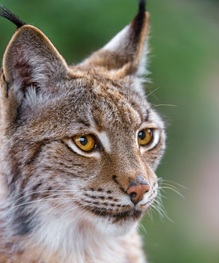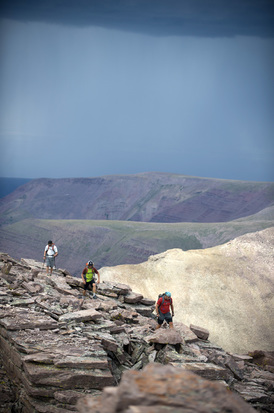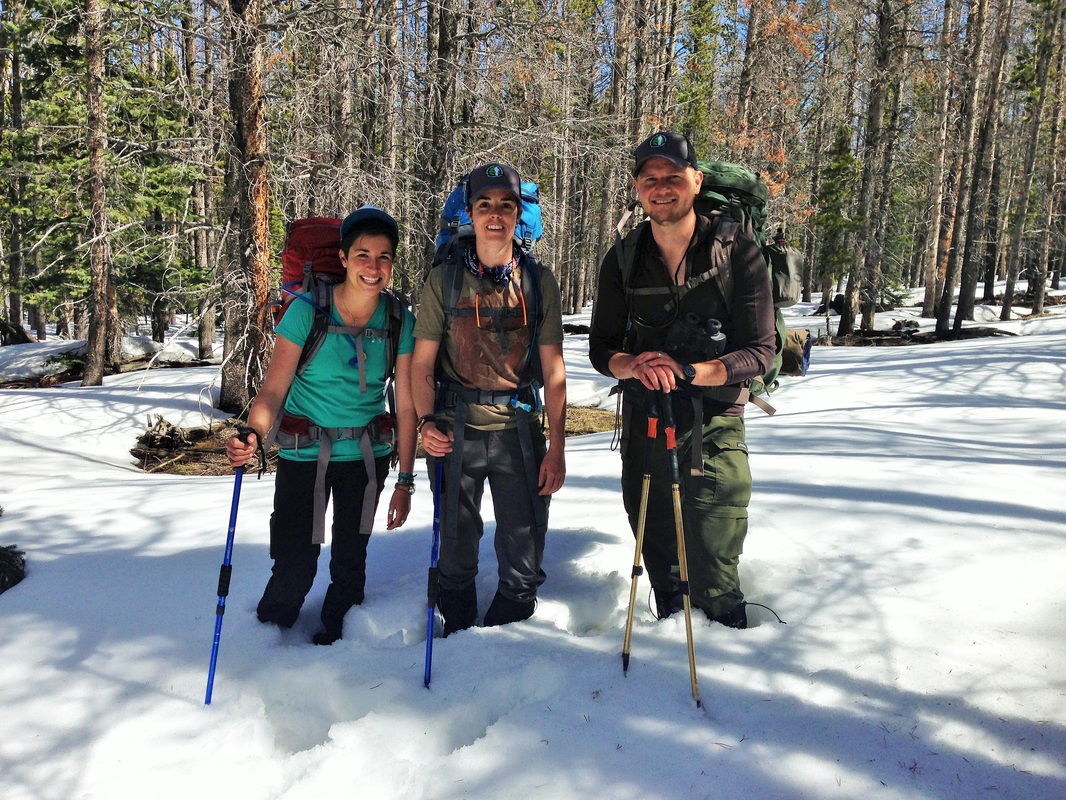 Canada Lynx (Photo by Emmanuel Keller)
Canada Lynx (Photo by Emmanuel Keller)
ASC Media Coordinator
Our planet is home to more than 7 billion people and 8.7 million known species. 5,416 of those species are mammals. As humans, we often see ourselves as the highest on the food chain: Disease and disaster are our only modern predators.
But at a trophic level, we are not apex predators.
Apex predators are vital to an ecosystem as they control population numbers of lower class predators and herbivores, keeping them from overpopulating and destroying native plant life.
According to Caroline Fraser, a writer for Yale Environment 360, “the loss of these predators is a “global decapitation of the systems that support life on earth.”
And the ripples of population decline in this class of predators go beyond the disruption of the natural balance of our ecosystems—they can also increase the occurrence of some diseases.
Canada lynx and the North American wolverine are two of our more elusive neighbors. Both of these apex predators thrive in boreal forest, or taiga, and exist in metapopulations—sprawling populations that seldom interact with one another.
While strength may lie in numbers, there is nothing feeble about the sight of the lone lynx or wolverine commanding his or her terrain. The lynx’s signature stare is enough to stop any man in his tracks, and the wolverine is famed for its ferocious constitution.
Habitat fragmentation in the form of roads, highways, and subdivision poses a major threat to lynx and wolverines, because connectivity between isolated populations is crucial to both species’ survival.
 The urban growth of the Salt Lake Basin and the oil and gas development in Wyoming bookend the Uintas, one of very few east-west running ranges in North America. (Photo by Lee Cohen)
The urban growth of the Salt Lake Basin and the oil and gas development in Wyoming bookend the Uintas, one of very few east-west running ranges in North America. (Photo by Lee Cohen)
ASC has done a number of projects focused on apex predators, and this summer we’re studying lynx and wolverines in Utah’s Uinta Mountains, where the Forest Service needs more information to better manage its lands.
Although Utah is considered part of the lynx’s historic range, the last officially documented lynx sighting in Utah was in 2004, tracked by satellite when two lynx intended to reestablish the population in Colorado moved through the Book Cliffs east of the Wasatch Range. The wolverine’s historic and current ranges are similar, and last year, a wolverine was documented in Utah for the first time in 30 years.
Because biologists don’t fully understand either species’ population or distribution, each new piece of information adds a valuable piece to the puzzle.
“Finding wolverines [or lynx] in the Uintas would help illustrate the importance of wildlife corridors, and also show that animals are moving up and down the American cordillera,” said ASC Program Director Mike Quist Kautz.
The story of wolverine conservation is one and the same as the story of connectivity, according to former Craighead Institute researcher and wildlife biologist Brent Brock.
“There is strong scientific consensus that at least in the northern Rockies, there are no single [mountain ranges] large enough to hold a genetically viable population of wolverines,” Brock said. “That means that each range like the Uintas can, at best, provide habitat for relatively few animals.”
The Uinta Range could optimistically support around 21 wolverines, according to a 2013 study led by renowned wolverine researcher Dr. Bob Inman. Given that there are only 250-300 wolverines in the United States, that’s a fairly sizeable figure. The US has habitat capacity for roughly 650, according to the same study.
Ultimately, conserving these apex predators could mean conserving the health of our shared ecosystem. More than that, one thing is certain: It’s up to us to do more to protect our neighbors.




